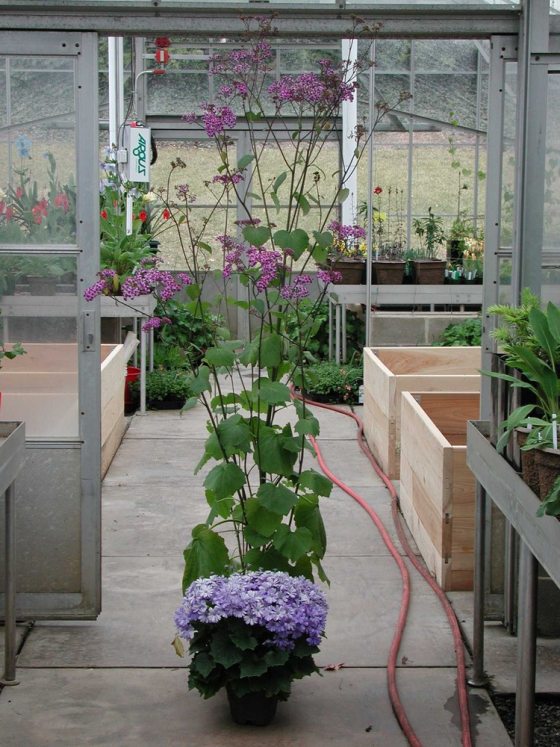Cineraria (Pericallis × hybrida) is an annual plant that Longwood has used in our late winter/early spring displays since the Conservatory opened in 1921. Because cineraria is difficult to propagate asexually, we used to obtain seeds from a commercial source, which has since discontinued the distribution of this crop. It then fell upon Longwood to maintain our own seed supply, which we accomplished at first by self-pollinating the plants and collecting the seed. But the vigor of the resulting plants rapidly reduced with each generation, a phenomenon known as inbreeding depression. If this highly desirable crop were to continue at Longwood, drastic measures were needed. To this end, Longwood sent two staff members to the Canary Islands in 1995 to collect the seed of native Pericallis (cineraria) species.

Our staff members brought back seed from Pericallis papyracea, a species that is tall-growing with small rose-colored flowers, which we crossed with the ‘Cornflower Blue’ strain. The resulting F1 generation contained individuals with traits that ranged between those of the two parents, with positive traits for height, canopy diameter, flower color, flower form, leaf size, and shape. These populations had individuals with white and very pale blue flowers, as well as ray petals that were blue distally (near the tip) and violet near the disk.

From 1996–2001, we continually backcrossed populations of plants with the original 'Cornflower Blue' cineraria. Our breeding goals were to stabilize the seed line for full-sized cobalt blue petals, produce a large number of flowers per plant, and increase plant height compared to the previous crop. These crosses were successful and Longwood now has its own hybrid cineraria to use in our displays. In order to prevent inbreeding depression and loss of vigor, our researchers grow the parents of this plant in sterile tissue culture with strict environmental controls, so we can maintain the plant line indefinitely.
When we need to produce seed, we bring several parent strains out of tissue culture and grow them in a traditional manner to produce flowers. We then cross these plants to produce the seed stock for the following year. This seed will then produce the wonderful blue cineraria that are always an eye-catcher in our late winter/early spring displays.